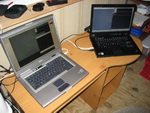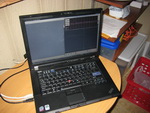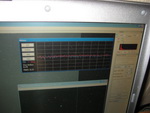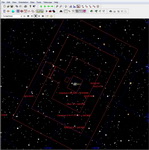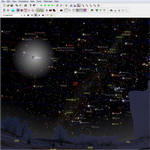Imaging Equipment - Software & Computers
I use two notebooks to capture images and control scopes and cameras. The first is my old Dell Precision M60 (Windows XP 32bit) and the second is my wife's Lenovo ThinkPad T500 (Windows 7 Home Premium 32bit). Both computers work very well, Dell specializes in CGE1400 (Canon 40 and SBIG ST-8300M plus Orion SteadyStar AO) while ThinkPad works with Orion 10" (QHY8). Each of them has 3 USB ports, which is my requirement (see Imaging Equipment" page for connection details).
My software of choice for camera control and image capture is
Nebulosity from
Stark Labs, now whe I am writing this at version 2.2.5. For guiding I use its companion
program from Stark Labs
PHD Guiding.
Nebulosity is a commercial software and it costs $60 (it
is along time since I bought it
![]() , as far as I
remember I started with version 1). It is very cheap, other programs of
this type run in $300 category, but still it has all what is needed. It
has camera control with all popular models covered (including DSLRs and
dedicated astro cameras),
focusing support, data reduction procedures (batch and single),
stacking (with sigma clipping), image analysis, image
conversion (batch and single), noise reduction and image
editing/processing tools (levels, curves, sharpening, DDP etc).
Nebulosity support is very good, with bug fixes and improvements being
released often. PHD Guiding is free, but very powerful program. It
supports most of the popular guiders and is very simple to use. It has
several useful tools for guiding analysis, starting with a graphing tool
and ending with logging capability. There is a free program
PECPrep that is
able to analyze and visualize PHD guiding log, it also converts PHD log
file into other formats supported by
PEAS, which is
another periodic error analysis program. There is a
Yahoo discussion group devoted to Stark Labs software, and it is an
excellent source of help and information.
, as far as I
remember I started with version 1). It is very cheap, other programs of
this type run in $300 category, but still it has all what is needed. It
has camera control with all popular models covered (including DSLRs and
dedicated astro cameras),
focusing support, data reduction procedures (batch and single),
stacking (with sigma clipping), image analysis, image
conversion (batch and single), noise reduction and image
editing/processing tools (levels, curves, sharpening, DDP etc).
Nebulosity support is very good, with bug fixes and improvements being
released often. PHD Guiding is free, but very powerful program. It
supports most of the popular guiders and is very simple to use. It has
several useful tools for guiding analysis, starting with a graphing tool
and ending with logging capability. There is a free program
PECPrep that is
able to analyze and visualize PHD guiding log, it also converts PHD log
file into other formats supported by
PEAS, which is
another periodic error analysis program. There is a
Yahoo discussion group devoted to Stark Labs software, and it is an
excellent source of help and information.
Pictures below show my typical two-laptop imaging setup in my warm room. Usually I connect the equipment, calibrate mounts if necessary (rarely), go to targets, focus and start capturing. Capturing takes typically several hours, so I leave it all running and go on the observatory deck to observe with my Obsession 18".
A very important step in imaging (and visual observing) is planning. I have an extensive list of objects that I found to be interesting for imaging, the list is based on all books, articles, discussion groups and Internet searches - anytime I find something interesting I add it immediately before it is forgotten. However, the real session planning is done with TheSkySix. It is a very powerful planetarium program with extensive databases, good graphics and many useful features like field of view indicators or local photorealistic horizon. I have all my sensor/scope combinations programmed into TheSkySix and I use this feature to find an optimal angle for a best off-axis guider guiding star, and to assess if a given object will look good with this particular sensor/scope combination. Photorealistic horizon can be produced from 360º panorama and is extremely useful for objects low above the horizon. Another important thing to prepare for is meridian flip, I have always appropriate times noted so I can go to the scopes and restart imaging (CGE will stop after meridian but won't do meridian flip by itself).
The last group of software tools I use are for final image processing. For this the main program is Adobe Photoshop CS4 which is the workhorse of final image processing. After the images are pre-processed and stacked with Nebulosity I export a TIFF image and go to Photoshop to do final steps. A very useful Photoshop plug-in is GradientXterminator, which does fantastic job eliminating image gradients. Another useful tool is Neat Image (external program, not a plug-in), it helps to reduce noise, but does it often in the way leaving good contrast and details in bright parts of the image.
